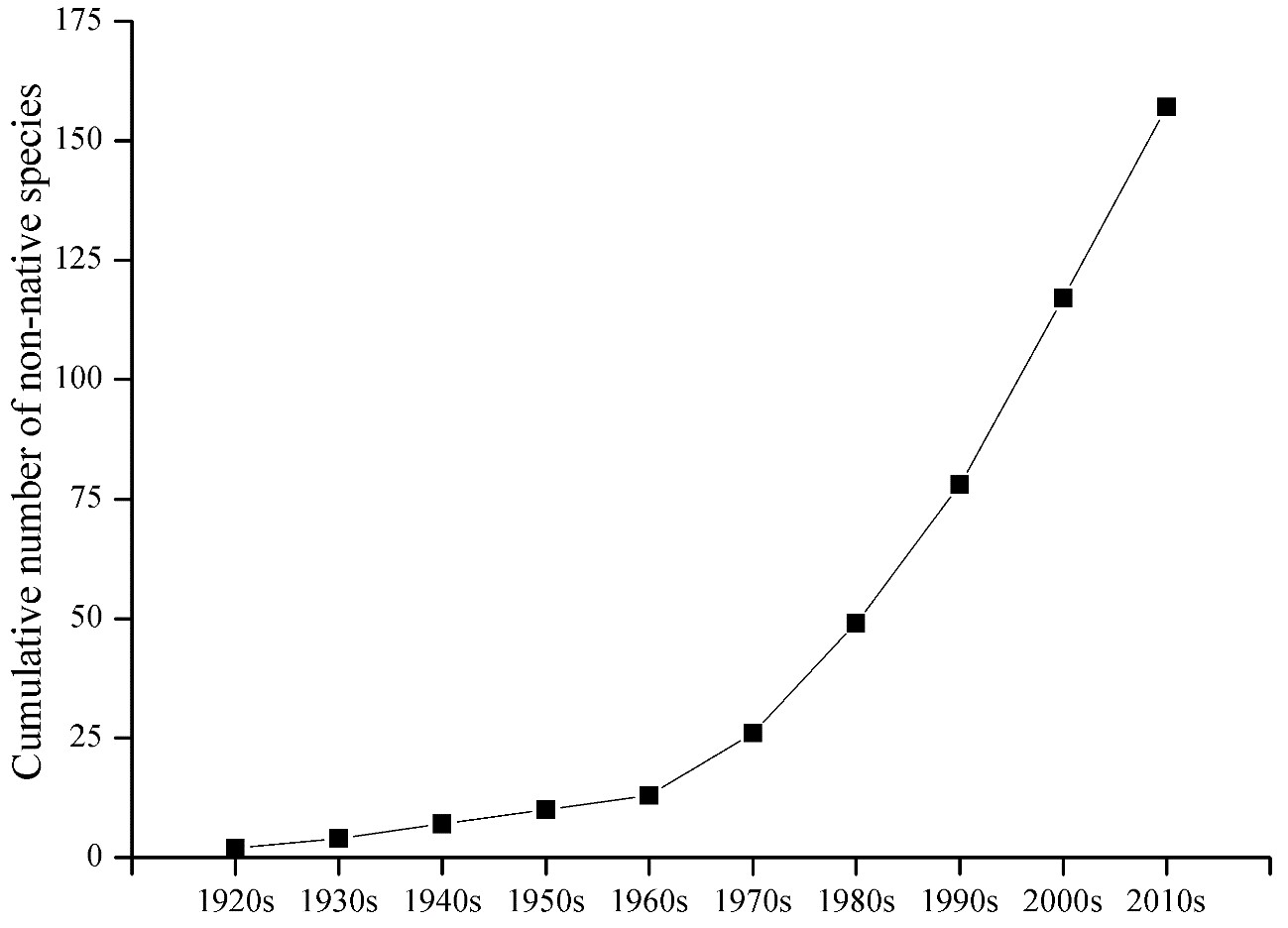Rapid biological invasion in Chinese second largest lake
Published 07 August, 2025
Freshwater biodiversity worldwide has undergone a notable decline over the past, with non-native species identified as one of the major contributing factors. In China, many non-native species in the Yangtze River Basin pose a serious threat to local biodiversity, the ecological environment, and even human health. However, there is very little information available regarding the types, distribution and impacts of non-native species, leading to a lag in relevant conservation measures.
Notably, Dongting Lake in the central Yangtze River basin, being the second largest freshwater lake in China, is an important habitat for many endangered species.
According to a new study published in the KeAi journal Water Biology and Security, a total of 157 non-native species (14 fishes, 136 plants, 1 amphibian, 2 crustacea, 2 mollusca, and 2 reptile species) have been imported into Dongting Lake.
“Some non-native species, such as red swamp crayfish (Procambarus clarkii), channel catfish (Ictalurus punctatus),and parrot's feather (Myriophyllum aquaticum), are valuable for quaculture and horticulture,” explains the study’s corresponding author Baoqiang Wang. “However, non-native species such as alligator weed (Alternanthera philoxeroides), apple snail (Pomacea canaliculata), and red eared slider (Trachemys scripta elegans), are a potential threat to local biodiversity, human health, and sustainable development.”
The authors suggest that Dongting Lake could serve as a model for developing and applying non-native species management strategies in other large lake systems.
“To reduce the unintentional introduction of additional non-native species into Dongting Lake, there is a need for stricter enforcement of management measures, improved handling protocols, and tighter regulation of species introductions,” adds Wang. “Without such strategies, some of the region's native biota face extinction biotic homogenization or long-term differentiation.”

Contact author:
Wen Xiong, College of Life Sciences, Hubei Normal University, China
xiongwen@hbnu.edu.cn; chinaxiongwen@gmail.com
Baoqiang Wang, Institute of Hydrobiology, Chinese Academy of Sciences, China
Funder:
This research was supported by the Second Tibetan Plateau Scientific Expedition and Research Program (STEP), Grant No. 2019 QZKK0501, the National Natural Science Foundation of China (No U2340218, 31600189) and Hubei Key Laboratory of Edible Wild Plants Conservation and Utilization (No EWPL202311).
See the article:
Xiong W, Zhang W, Cai L, Bowler PA, Chao CX, Wang BQ (2025) Non-native aquatic speices in Dongting Lake basin, China. Water Biology and Security https://doi.org/10.1016/j.watbs.2025.100378